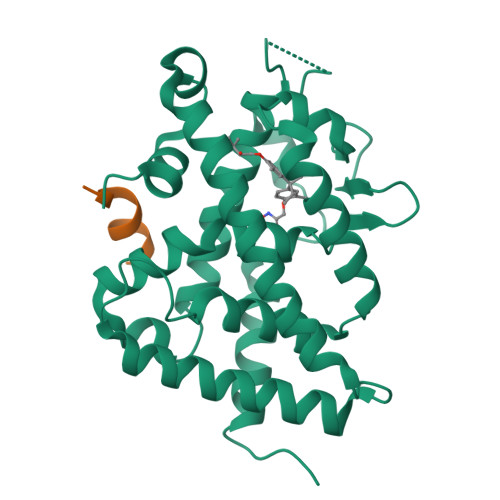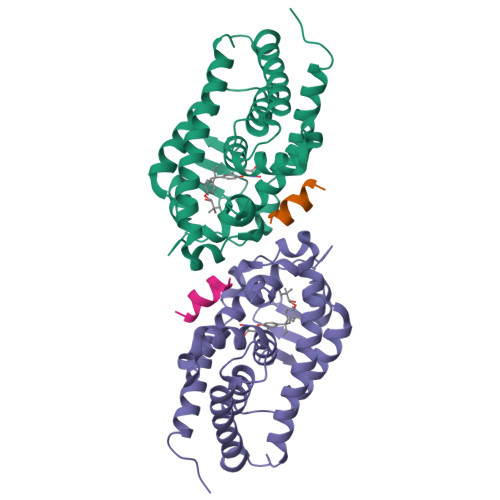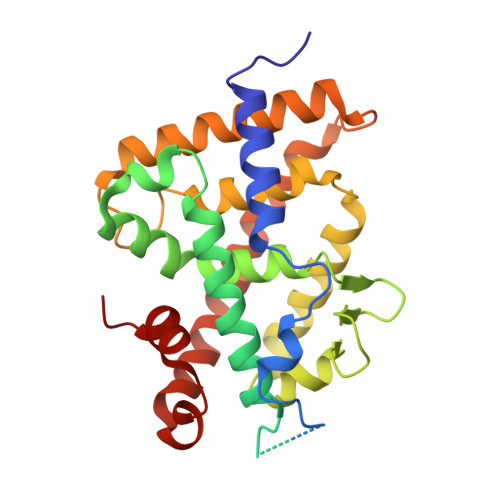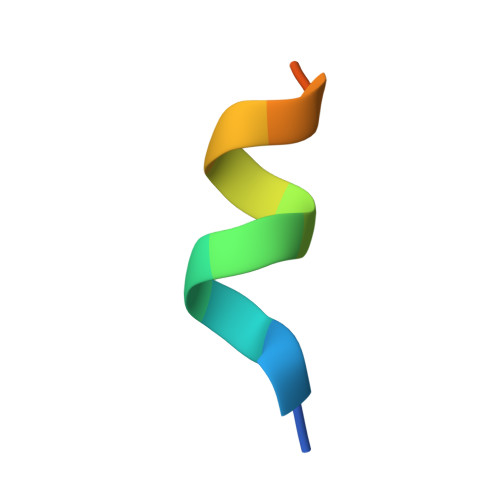Synthetically accessible non-secosteroidal hybrid molecules combining vitamin d receptor agonism and histone deacetylase inhibition.
Fischer, J., Wang, T.T., Kaldre, D., Rochel, N., Moras, D., White, J.H., Gleason, J.L.(2012) Chem Biol 19: 963-971
- PubMed: 22921063
- DOI: https://doi.org/10.1016/j.chembiol.2012.05.024
- Primary Citation of Related Structures:
4FHH, 4FHI - PubMed Abstract:
1,25-Dihydroxyvitamin D(3) (1,25D), the hormonal form of vitamin D, and several analogs have failed as monotherapies for cancer because of poor efficacy or acquired resistance. However, 1,25D analogs are amenable to bifunctionalization. Preclinical studies have revealed combinatorial effects of 1,25D analogs and histone deacetylase inhibitors (HDACi). Secosteroidal hybrid molecules combining vitamin D receptor (VDR) agonism with HDACi displayed enhanced efficacy but are laborious to synthesize. Here, we have developed easily assembled, fully integrated, non-secosteroidal VDR agonist/HDACi hybrids. The most promising are full VDR agonists with ~10-fold lower potency than 1,25D. Structure/function studies revealed that antiproliferative activity against 1,25D-resistant squamous carcinoma cells required VDR agonism and HDACi. Remarkably, modeling and X-ray crystallography reveal non-secosteroidal hybrids bind in the VDR ligand binding domain in the opposite orientation of their secosteroidal counterparts.
Organizational Affiliation:
Department of Chemistry, McGill University, Montreal, Quebec H3A 0G4, Canada.




















